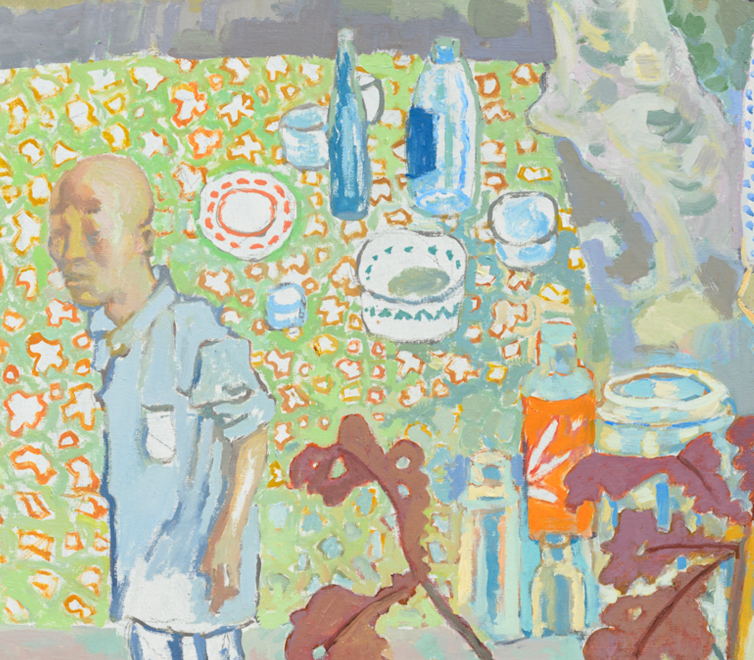
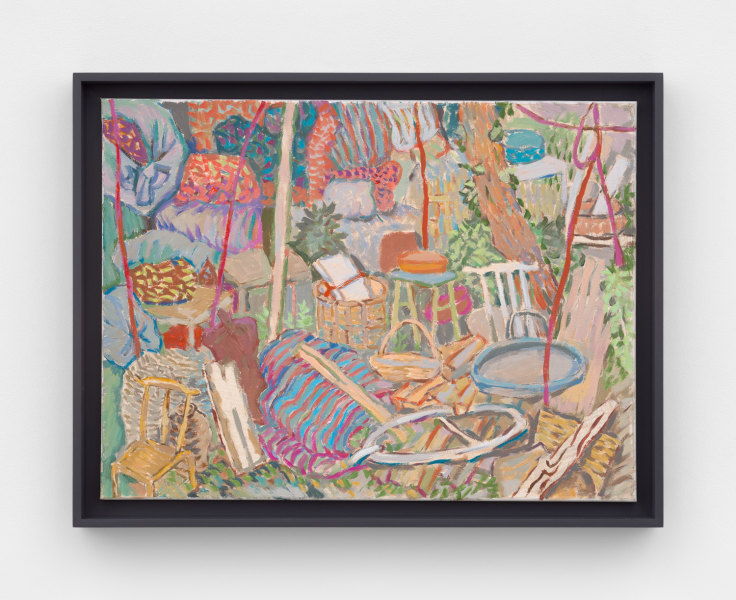
YUN-FEI JI
All the things packed up, 2023
Acrylic on canvas
18 x 24 in.
45.7 x 61 cm
JCG15950
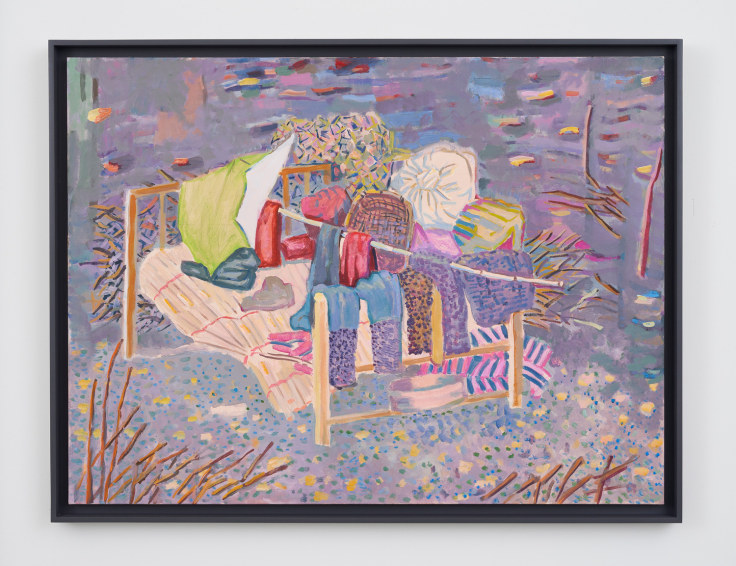
YUN-FEI JI
The Bed, 2022
Acrylic on canvas
30 x 40 in
76.2 x 101.6 cm
JCG13665
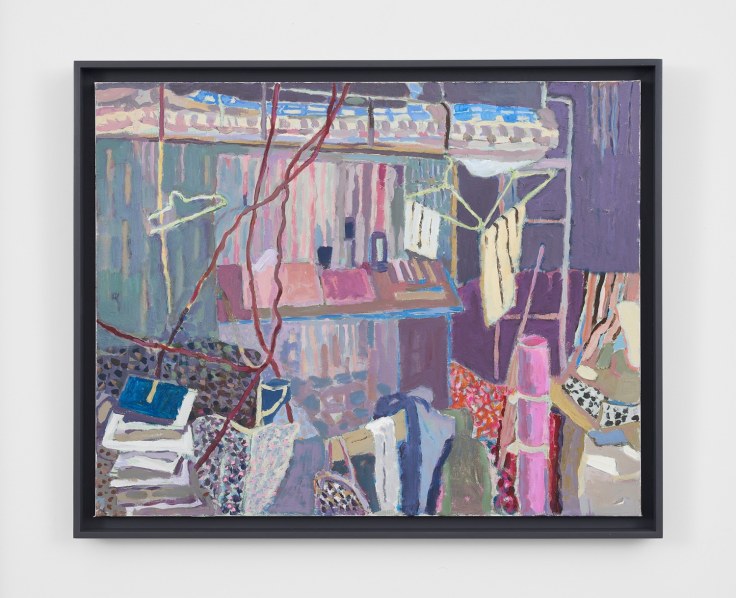
YUN-FEI JI
Bunk Bed, 2022
Acrylic on canvas
24 x 30 in
61 x 76.2 cm
JCG13676
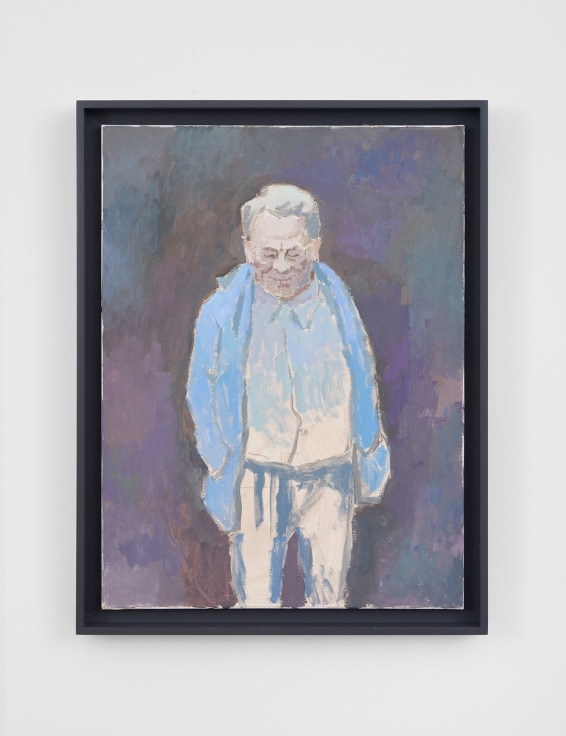
YUN-FEI JI
The Man with Glasses, 2022
Acrylic on canvas
24 x 18 in
61 x 45.7 cm
JCG13673

YUN-FEI JI
Satellite Dish on a Bed, 2022
Acrylic on canvas
20 x 20 in.
50.8 x 50.8 cm
JCG13668
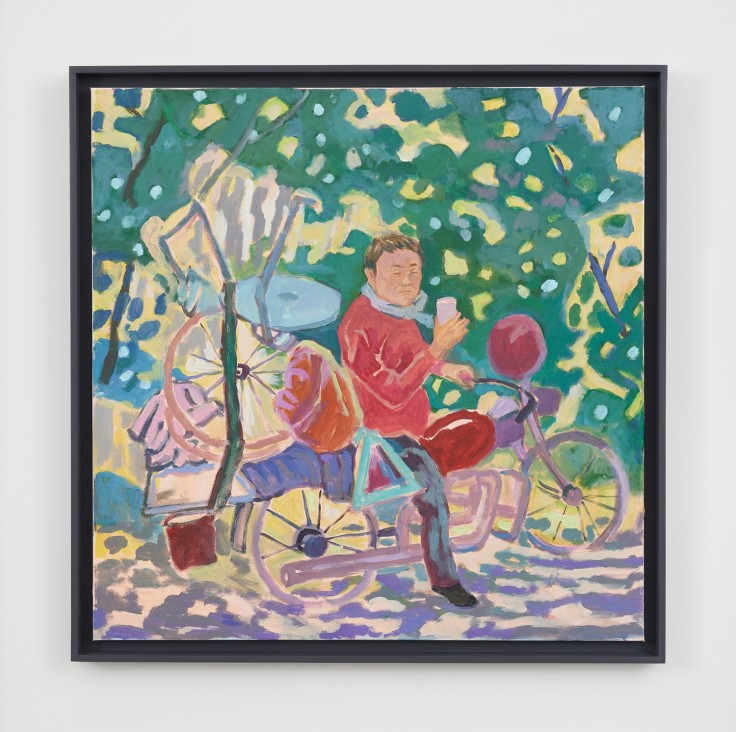
YUN-FEI JI
Going Home in High Spirits, 2022
Acrylic on canvas
30 x 30 in
76.2 x 76.2 cm
JCG13670
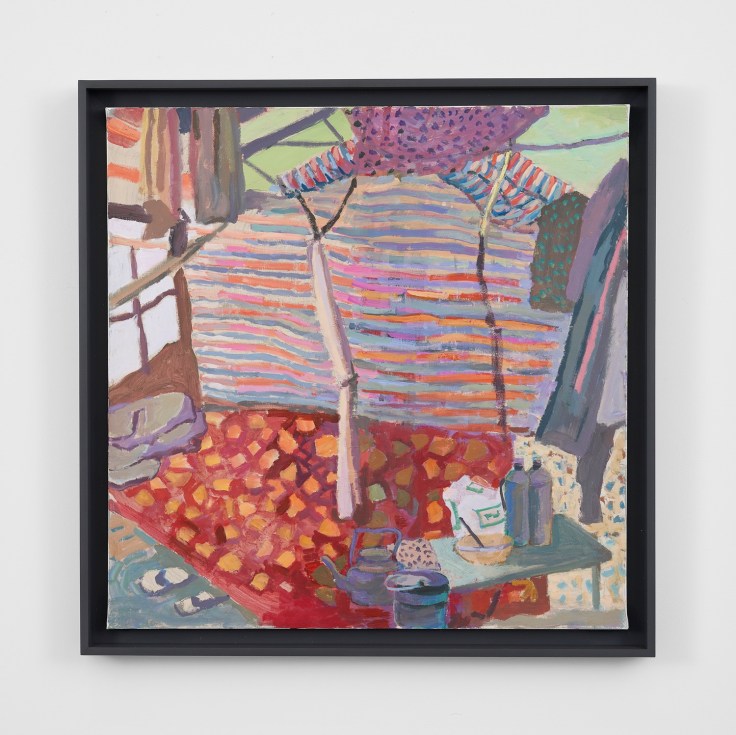
YUN-FEI JI
Migrant Worker's Tent, 2022
Acrylic on canvas
24 x 24 in
61 x 61 cm
JCG13669
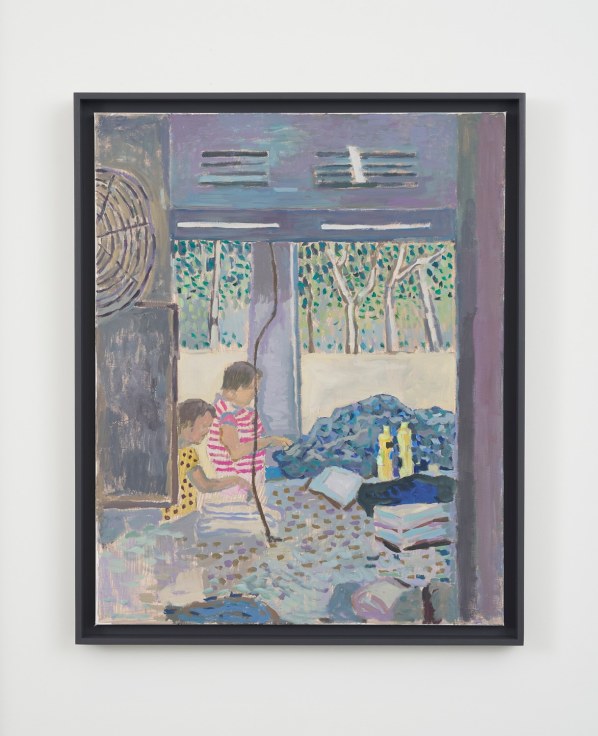
YUN-FEI JI
Sewing / High Noon, 2022
Acrylic on canvas
30 x 24 in
76.2 x 61 cm
JCG13677
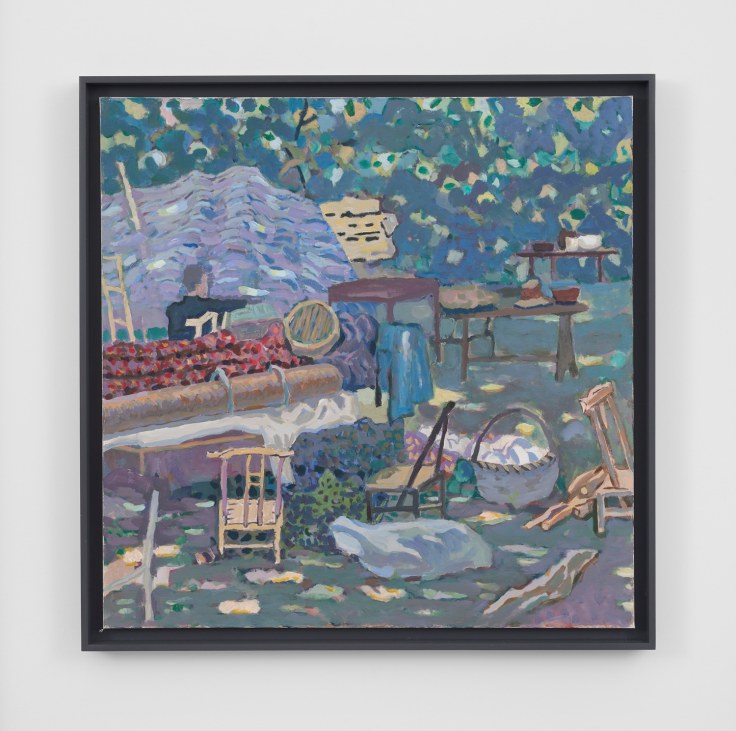
YUN-FEI JI
Everything Moved Outside, 2022
Acrylic on canvas
30 x 30 in.
76.2 x 76.2 cm
JCG13671
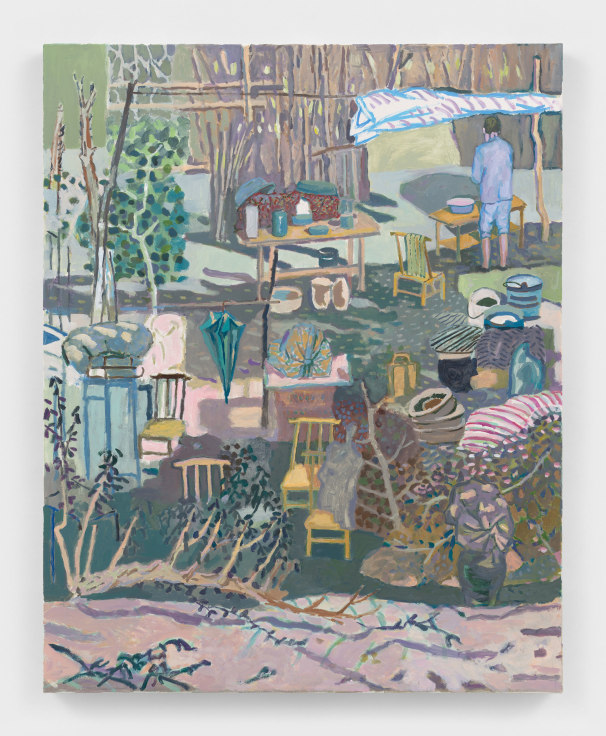
YUN-FEI JI
The Front Yard, 2022
Acrylic on canvas
60 x 48 in
152.4 x 121.9 cm
JCG13679
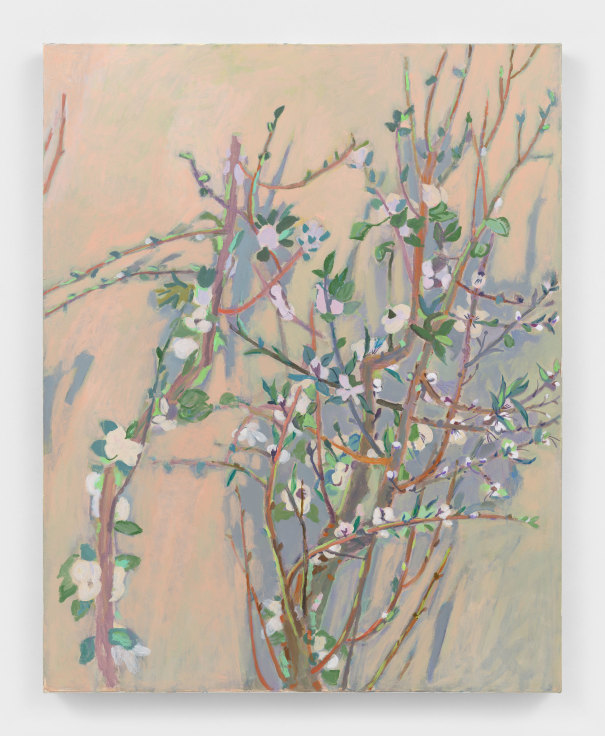
YUN-FEI JI
Early Spring Bloom, 2020, 2022
Acrylic on canvas
60 x 48 in.
152.4 x 121.9 cm
JCG13678
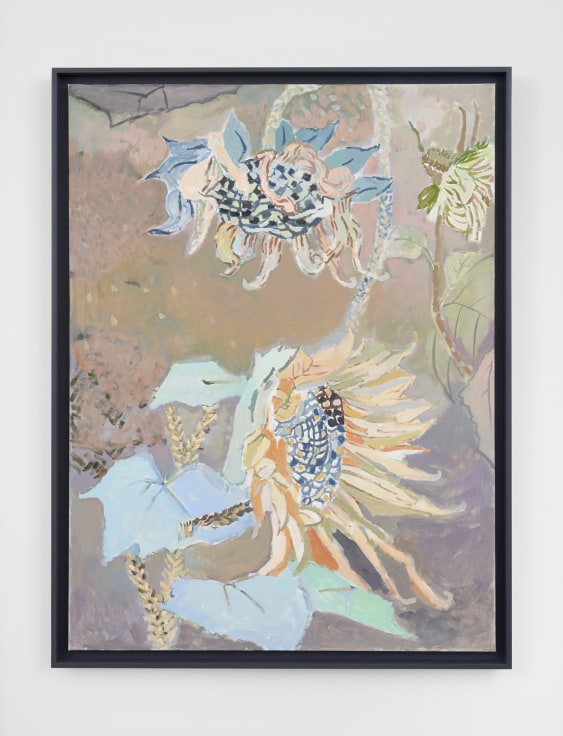
YUN-FEI JI
Sunflower Turned Its Back, 2022
Acrylic on canvas
40 x 30 in
101.6 x 76.2 cm
JCG13667
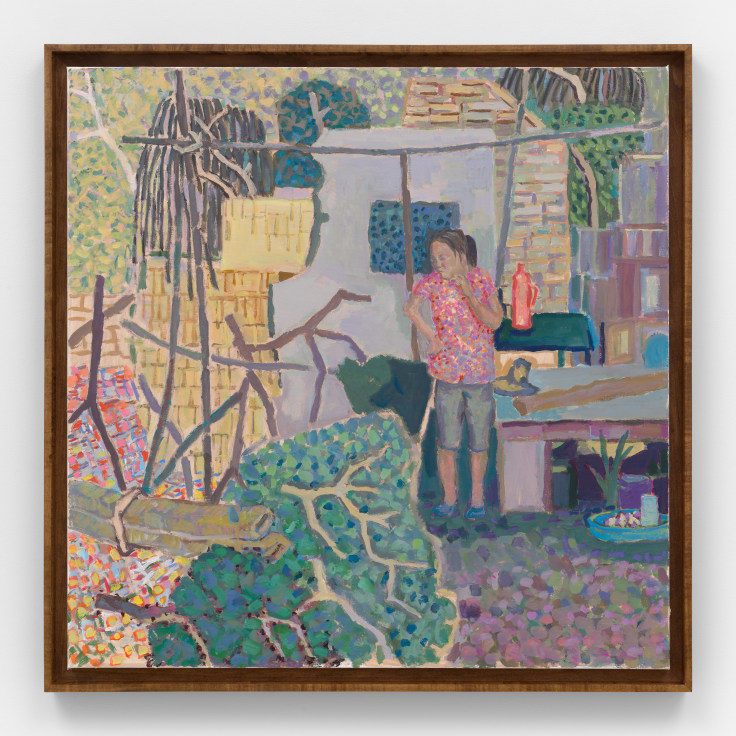
YUN-FEI JI
The Woman in the Pink Shirt, 2022
Acrylic on canvas
30 x 30 in.
76.2 x 76.2 cm
JCG14026
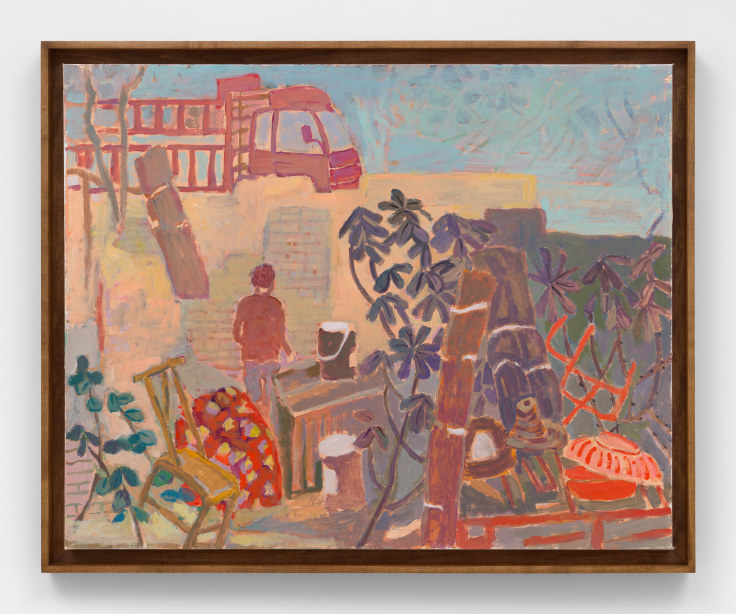
YUN-FEI JI
The Red Truck is Waiting, 2022
Acrylic on canvas
30 x 24 in.
76.2 x 61 cm.
JCG14027
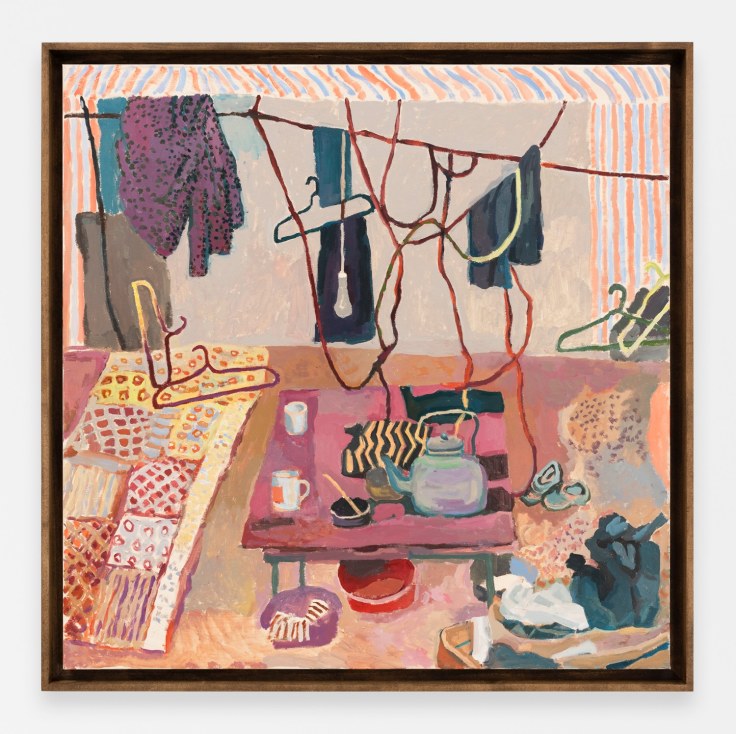
YUN-FEI JI
Sleeping Quarter, 2022
Acrylic on canvas
30 x 30 in
76.2 x 76.2 cm
JCG13692

YUN-FEI JI
The Long, Long Wait, 2022
Acrylic on canvas
36 x 24 in.
91.4 x 61 cm
JCG13675
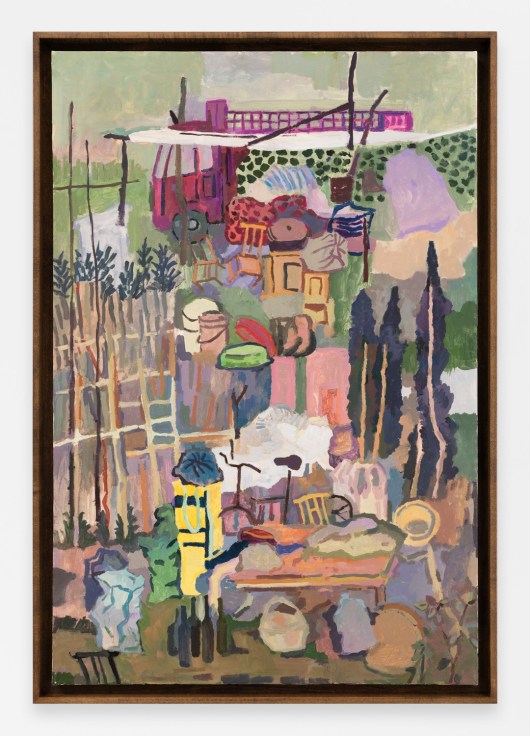
YUN-FEI JI
The Red Moving Truck, 2022
Acrylic on canvas
36 x 24 in.
91.4 x 61 cm
JCG13674
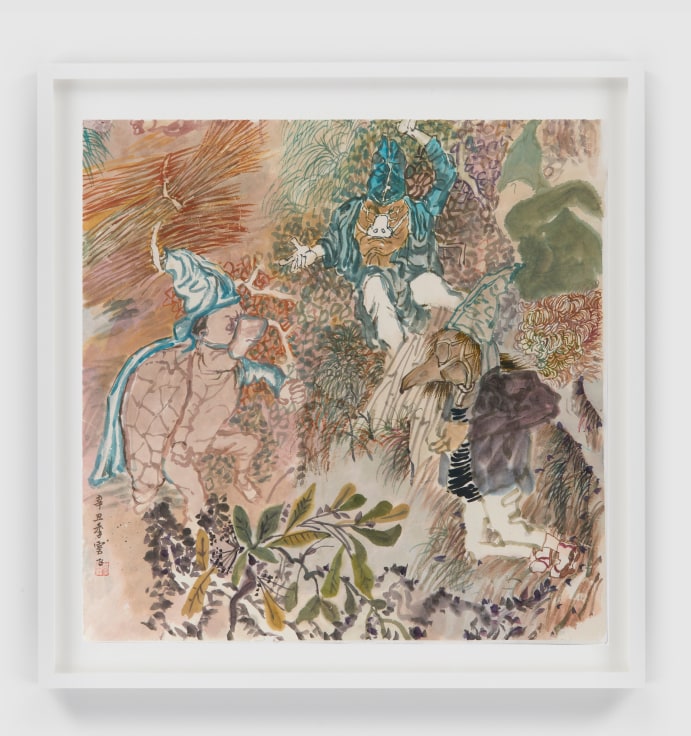
YUN-FEI JI
The three hooded men, 2021
Ink and watercolor on paper
18 1/2 x 19 1/8 in.
47 x 48.6 cm
JCG12388
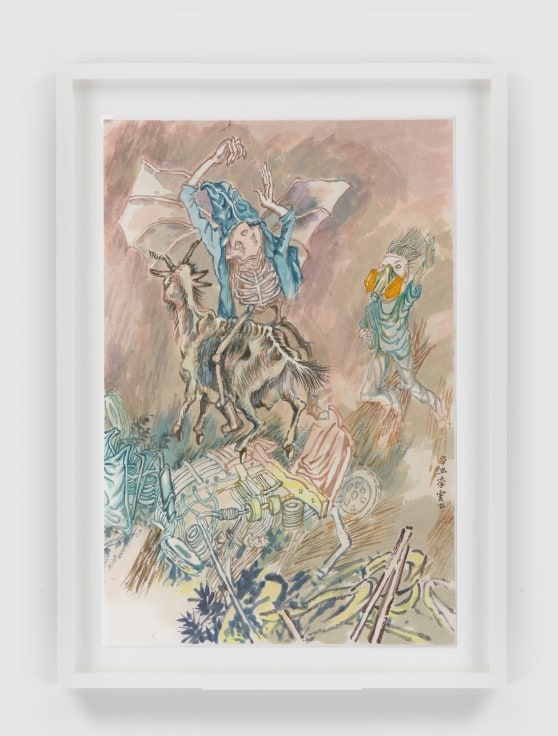
YUN-FEI JI
The hooded skeleton on a goat, 2021
Ink and watercolor on paper
23 1/4 x 16 1/2 in.
59.1 x 41.9 cm
JCG12389
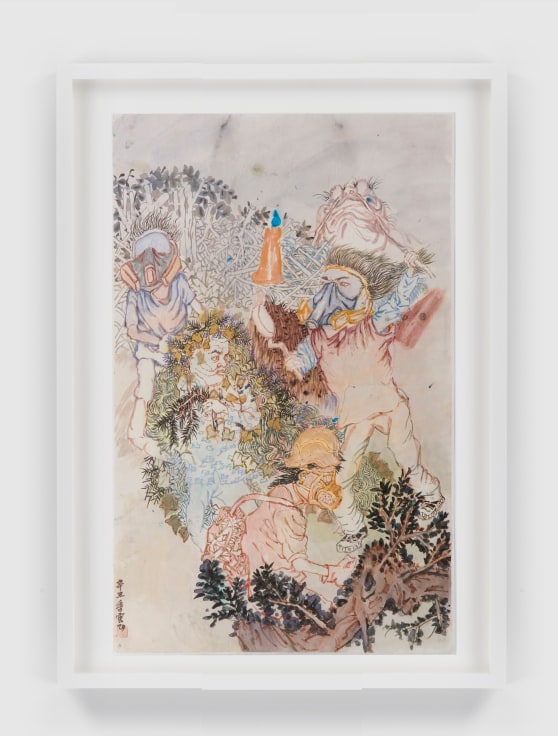
YUN-FEI JI
The protesters, 2021
Ink and watercolor on paper
27 1/2 x 17 1/2 in.
69.8 x 44.5 cm
JCG12390
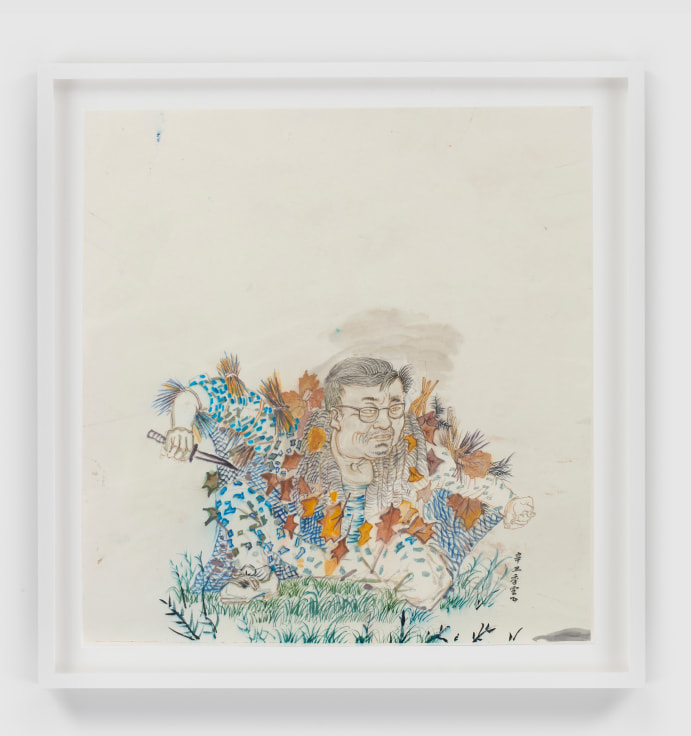
YUN-FEI JI
The camouflaged man with a dagger, 2021
Ink and watercolor on paper
29 1/8 x 27 3/8 in.
74 x 69.5 cm
JCG12391

YUN-FEI JI
Yellow and blue umbrellas, 2021
Ink and watercolor on paper
30 1/2 x 27 1/2 in.
77.5 x 69.8 cm
JCG12392
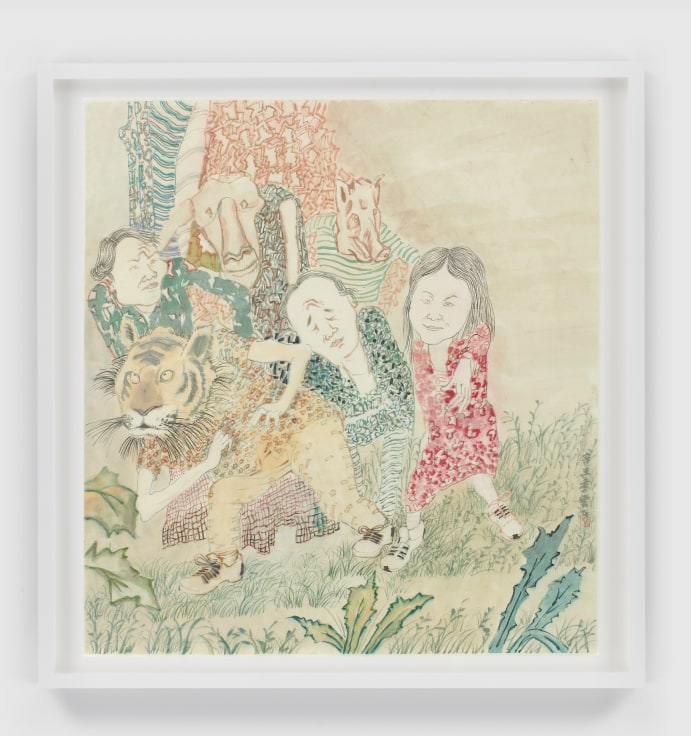
YUN-FEI JI
The nativists and immigrants, 2021
Ink and watercolor on paper
30 x 27 1/2 in.
76.2 x 69.8 cm
JCG12393
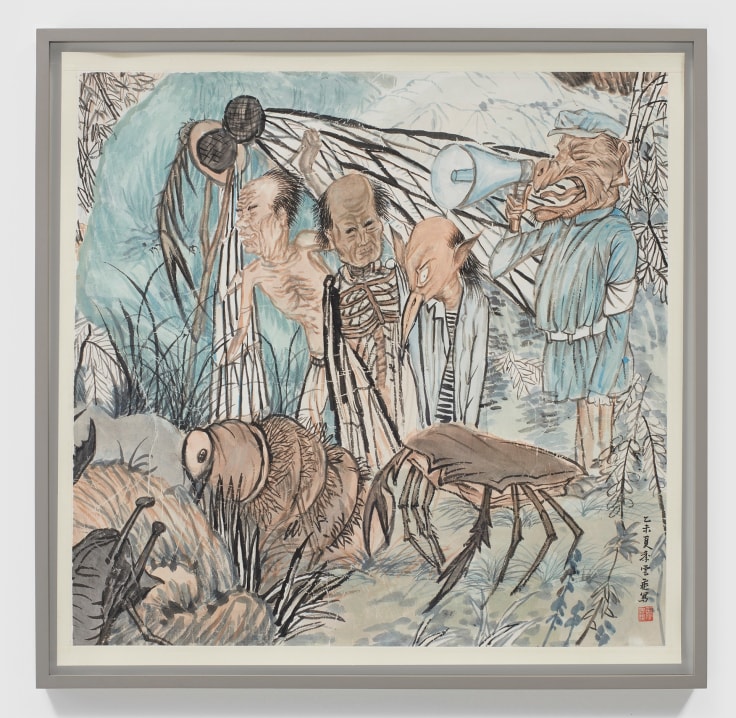
YUN-FEI JI
The Megaphone, 2015
ink and watercolour on Xuan paper mounted on silk
20 1/8 x 20 1/2 in.
51.2 x 52 cm
JCG11422
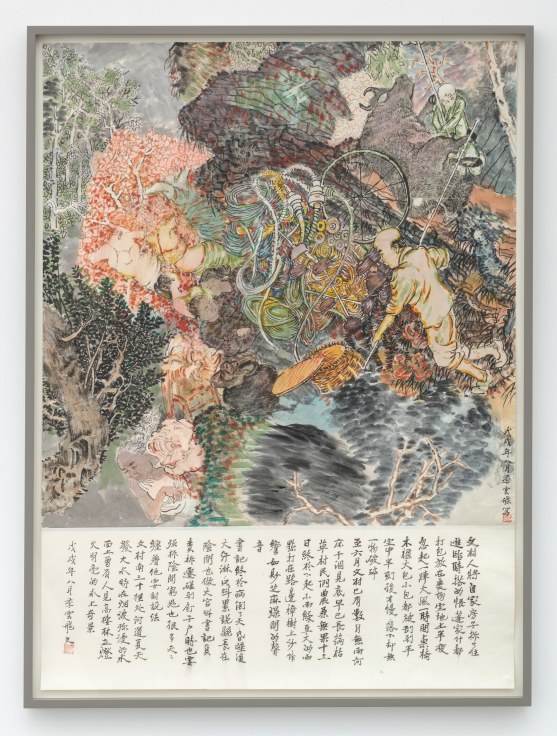
YUN-FEI JI
Midnight Sudden Wind, 2018
Ink and watercolor on Xuan paper
35 1/8 x 25 5/8 in.
89 x 65 cm
JCG11373
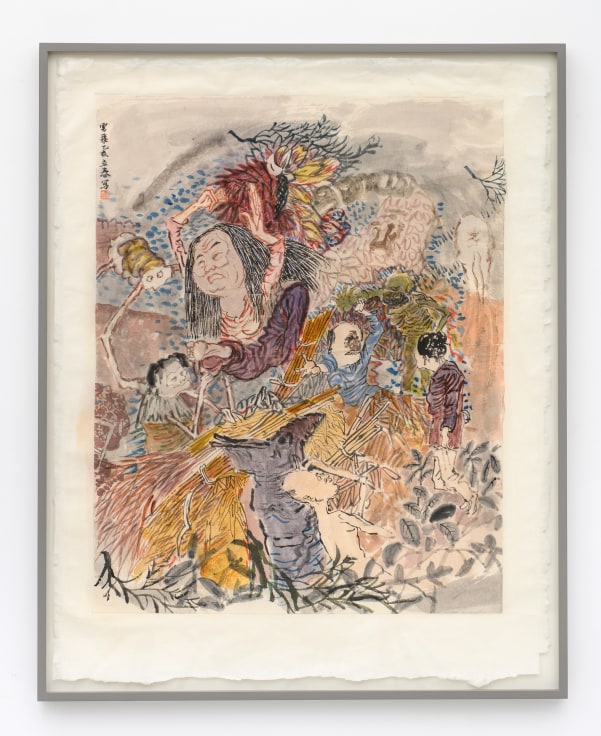
YUN-FEI JI
Masked Dance, 2019
Ink and watercolor on Xuan paper
28 1/8 x 22 1/4 in.
71.5 x 56.6 cm
JCG11374
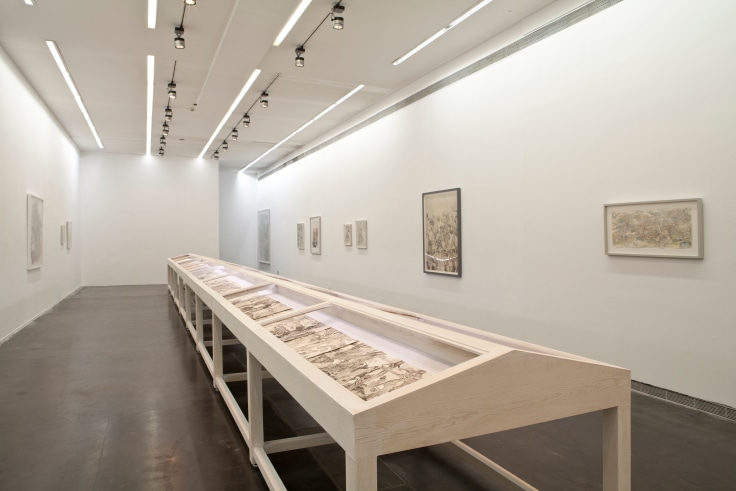
Installation View, Water Work, UCCA Center for Contemporary Art, Beijing, China, June 3 - July 23, 2012
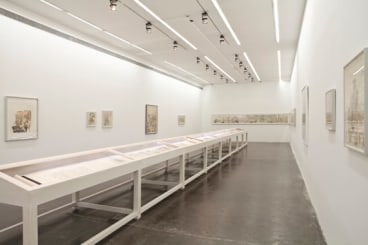
Installation View, Water Work, UCCA Center for Contemporary Art, Beijing, China, June 3 - July 23, 2012

YUN-FEI JI
Drought in Village Wen, 2013
Watercolor on Xuan paper and silk
13 5/8 x 40 1/2 in.
34.5 x 103 cm
JCG11372
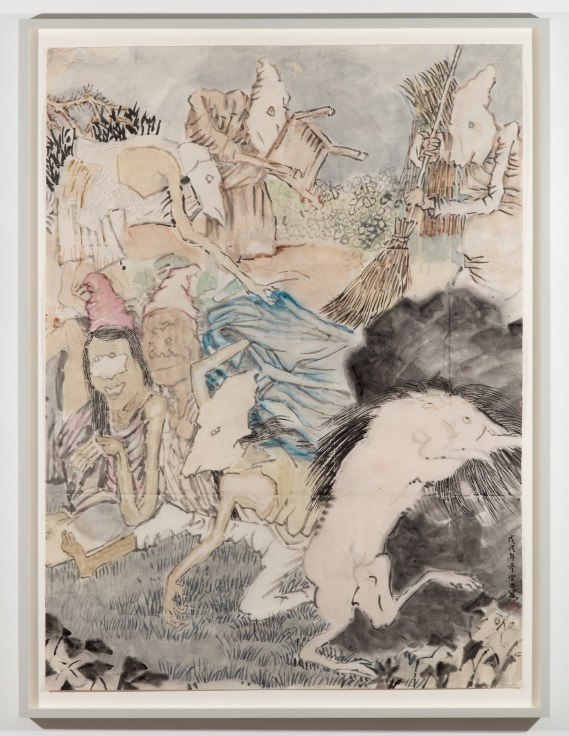
YUN-FEI JI
At Sundown, 2017-2018
Ink and watercolor on Xuan paper
37 1/2 x 27 3/4 in.
95.3 x 70.5 cm
JCG9773

YUN-FEI JI
The Processions, 2017-2018
Watercolor and ink on Xuan paper
Framed: 17 1/4 x 83 1/4 in. (43.8 x 211.5 cm)
Unframed: 13 x 78 1/2 in. (33 x 199.9 cm)
JCG9775
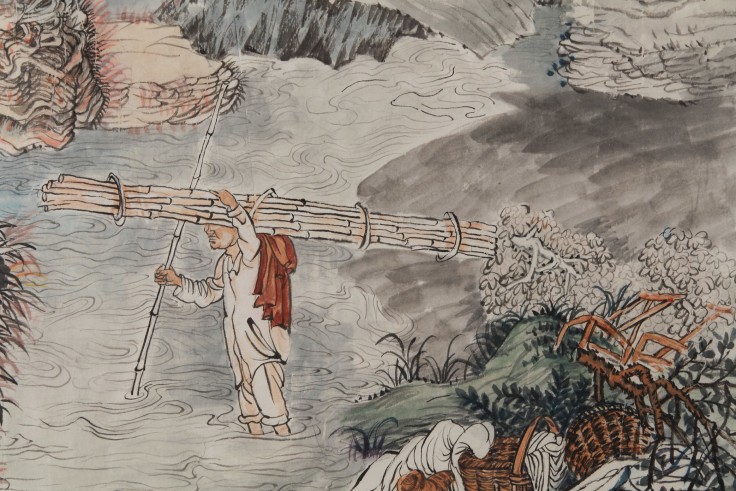
YUN-FEI JI
The Processions, 2017-2018
Detail
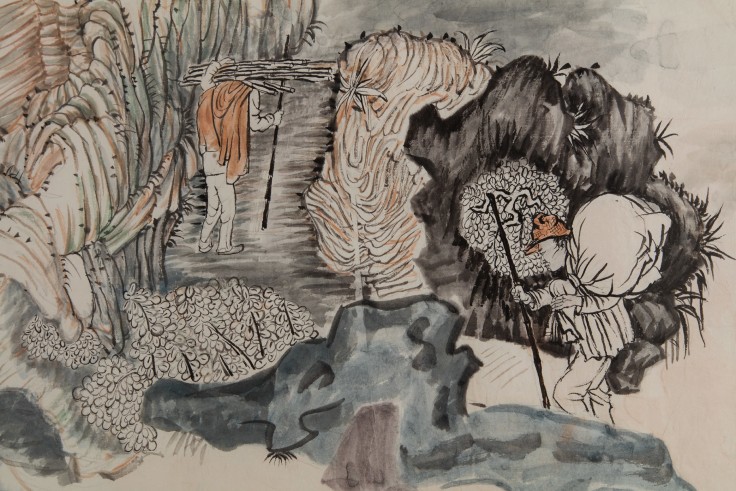
YUN-FEI JI
The Processions, 2017-2018
Detail
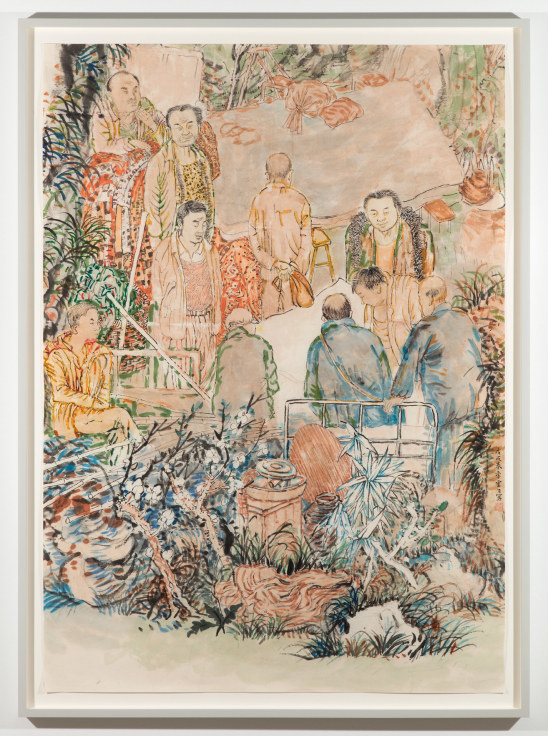
YUN-FEI JI
Eight Neighbors, 2017-2018
Watercolor and ink on Xuan paper
Framed: 46 x 33 3/4 in. (116.8 x 85.7 cm)
Unframed: 42 1/2 x 30 1/2 in. (108 x 77.5 cm)
JCG9772
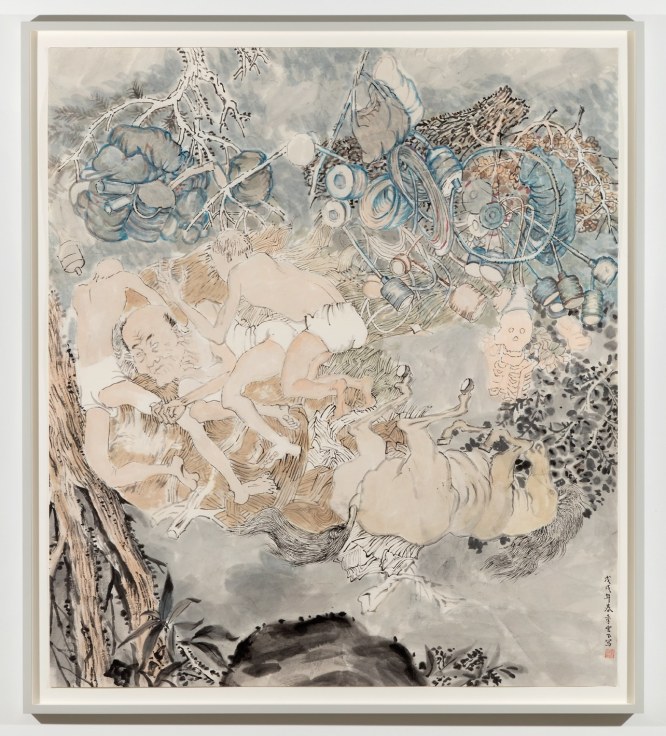
YUN-FEI JI
Tumbling, 2017-2018
Watercolor and ink on Xuan paper
Framed: 42 1/2 x 38 1/4 in. (108 x 97.2 cm)
Unframed: 39 1/2 x 34 1/2 in. (100.3 x 87.6 cm)
JCG9768

YUN-FEI JI
The Staging Area, 2016
Ink and watercolor on Xian paper
13 1/2 x 49 in.
34.3 x 124.5 cm
JCG8693
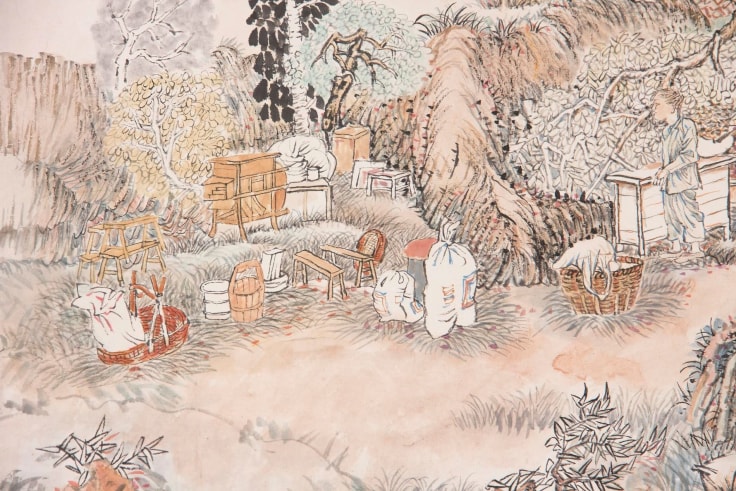
YUN-FEI JI
The Staging Area, 2016
Detail
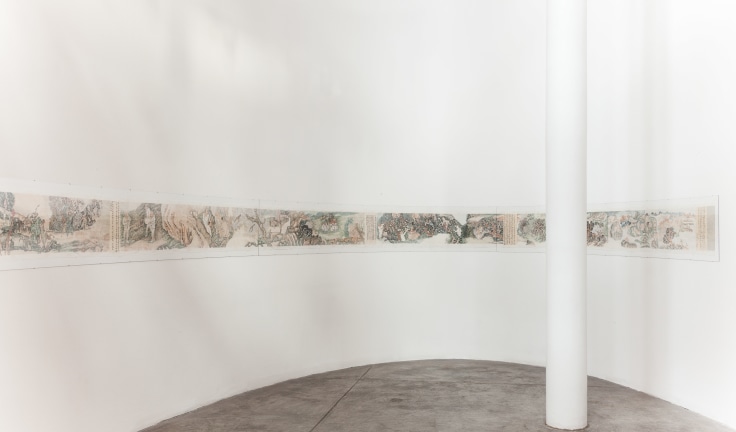
YUN-FEI JI
The Village and its Ghosts, 2014
Ink and watercolor on Xian paper
15 3/4 x 684 1/4 in.
40 x 1738 cm
JCG7680
Installation View at Prospect.3: Notes for Now, Contemporary Arts Center New Orleans, New Orleans, LA, 2014
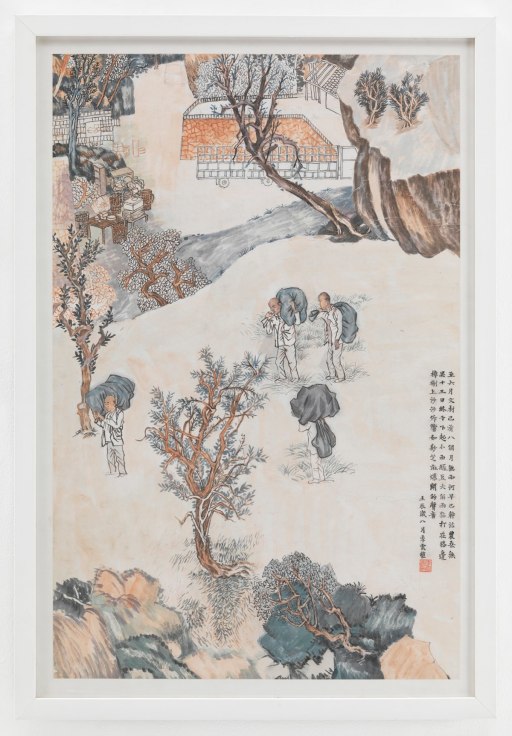
YUN-FEI JI
Looking for Work in the City, 2013-2014
Mineral pigments and ink on Xuan paper mounted on silk
Unframed: 28 1/4 x 18 1/4 in. (71.8 x 46.4 cm)
Framed: 32 5/8 x 22 1/2 in. (82.9 x 57.2 cm)
JCG7200

YUN-FEI JI
A Sudden Wind in the Village Wen, 2013
Mineral pigments and ink on Xuan paper and silk
13 3/8 x 48 1/8 in.
35.5 x 123 cm
JCG6708
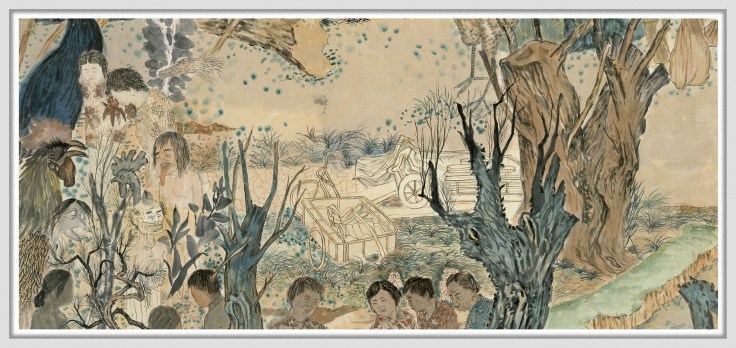
YUN-FEI JI
Nine Women, 2006
Mineral pigments and ink on mulberry paper
24 1/2 x 54 1/2 in.
62.2 x 138.4 cm
JCG2998
Yun-Fei Ji utilizes the structures and symbols of folkloric tradition to speak truth to power. Full of phantoms, demons, and other spectral characters, Ji’s paintings have frequently functioned as metaphorical critiques of oppressive power structures—and strategies of defiance. In his ink and watercolor compositions, these ghostly figures are stand-ins for the complex political undercurrents and cultural tug-of-war shaping rural communities in a rapidly developing world.
Ji is inspired by the ghost stories that he first learned growing up in the countryside during the late Chinese Cultural Revolution. He employs the stacked perspective and flattened space of classical Chinese painting to tell contemporary stories that, while geographically specific, speak to a collective human experience. The work often comments on political realities of both US and China, expressed in codes by using metaphor and allusion. There is a satirical streak, and his love of the grotesque is balanced with humor and a deep sense of irony. Each work is an act of resistance, insisting that narratives of displacement and environmental destruction are worth preserving.
In monumental scrolls like Village Wen's Progress, 2017 and After the First Seventh Day, 2016, Ji’s compositions are populated by individualized, contemporary figures that inhabit a landscape in perpetual transition. Suspended between modernity and tradition, the village becomes a metaphor for community. The ghosts of ancestors and animal-like folkloric figures that intermingle with these present-day villagers act as potent reminders of the time-honored cultural traditions endangered by this march towards “progress.” Although these scrolls are read from right to left, the narrative can be entered at any point, emphasizing a continuum of past, present, and future.
Several important bodies of work are rooted in Ji’s fieldwork, exploring communities affected by man-made and natural environmental disasters. These projects often document the involuntary relocations of entire villages to make way for ambitious infrastructure and urbanization projects, as well as the concurrent effects of climate change. The Three Gorges Dam and the devastation its development has caused throughout the Yangtze Valley have been subject matter for Ji's for a number of years. Its immense reservoir has displaced at least 1,500,000 people and submerged thousands of villages and valuable archaeological sites. Ji’s epic scroll The Three Gorges Dam Migration, 2008, records in an unfurling cinematic narrative the myriad effects of this social and environmental engineering. In 2009 the Library Council of The Museum of Modern Art commissioned a major printmaking project in collaboration with the famed printing and publishing house Rongbaozhai. Titled The Three Gorges Dam Migration, this ten-foot-long horizontal image was hand-printed in China from over 500 hand-carved woodblocks.
Water Rising, 2006 is a major diptych scroll produced in response to Hurricane Katrina. The figures in the left panel of this unfolding drama are running toward the figures in the right panel as if they are due to collide with each other—they are fleeing with nowhere to go. Ji spent time in New Orleans during the aftermath of the storm, documenting the flooding and wreckage caused by the levees breaking. Subsequent works such as The Wreckage and Columbus Park, both 2008, depict a denunciation of the reality he found in the city in Ji’s lyrical, fluid brushwork.
Philip Tinari writes of Ji’s work, “While his formal explorations are formidable, Yun-Fei Ji’s real interest might be in depicting ordinary people in extreme conditions--both the reality of their predicaments, and the mythologies that emerge in our shared narratives of them. He attains clarity on these events and situations, which he ventures to share through his work, by actually going to the source, immersing himself in the visual details of these emerging histories in real time.”
Yun-Fei Ji was born in 1963 in Beijing, China. He earned his BFA from the Central Academy of Fine Arts, Beijing and his MFA from the University of Arkansas at Fayetteville in Fayetteville, Arkansas. In 2005, Ji was Artist-in-residence at Yale University where he conducted extensive research with the institution’s scholars. He received the 2006 American Academy Prix de Rome Fellowship and Residency and was the 2007 Artist-in-residence at the Parasol Unit Foundation for Contemporary Art in London. Major solo exhibitions include Ji Yun-Fei: Last Days of Village Wen at the Cleveland Museum of Art; Yun-Fei Ji: The Intimate Universe at the Ruth and Elmer Wellin Museum of Art at Hamilton College, which traveled to the Honolulu Museum of Art (2016); and Yun-Fei Ji: Waterworks at the Ullens Center for Contemporary Art in Beijing, China (2013). Ji has been the subject of further solo exhibitions at the Kalamazoo Institute of Arts, Kalamazoo, MI; Paul and Lulu Hilliard Museum of Art, University of Louisiana, Lafayette, LA; the University Museum of Contemporary Art, UMASS Amherst, MA; Contemporary Art Museum, St. Louis; the Rose Museum at Brandeis University, Waltham; the Peeler Art Center, DePauw University, Greencastle; and the Institute of Contemporary Art, University of Pennsylvania, Philadelphia.
Ji’s work has been widely exhibited throughout the United States and Europe, including the 2002 Whitney Biennial, the 2011 Lyon Biennale, and the 2012 Biennale of Sydney. In 2008, his work was featured in Displacement: the Three Gorges Dam and Contemporary Chinese Art, an exhibition of four Chinese artists which originated at the Smart Museum of Art, Chicago, Illinois, and toured nationally. In 2014, Ji presented a new monumental scroll for the Prospect.3 New Orleans biennial, curated by Franklin Sirmans. In 2016, his work was included in Show and Tell: Stories in Chinese Paintings at the Metropolitan Museum of Art. From 2018-2019, Ji was featured in the exhibition Hand Drawn Action Packed, which traveled to five museums throughout the United Kingdom. Ji has been the subject of several monographs, including Yun-Fei Ji: The Intimate Universe (2016, co-published by Delmonico and the Wellin Museum of Art) and Yun-Fei Ji: Water Work (2013, published by UCCA Books). Ji’s work is included in the permanent collections of major public institutions including the Museum of Modern Art, New York, NY; Whitney Museum of American Art, New York, NY; Asia Society Museum, New York, NY; Baltimore Museum of Art, Baltimore; MD; Virginia Museum of Fine Arts, Richmond, VA; British Museum, London, United Kingdom; Calouste Gulbenkian Foundation, Lisbon, Portugal; Philadelphia Museum of Art, Philadelphia, PA; Cleveland Museum of Art, Cleveland, OH; Norton Museum of Art, West Palm Beach, FL; Harvard Art Museums, Cambridge, MA; Hammer Museum, Los Angeles, CA; Nasher Museum at Duke University, Durham, NC; Yale University Art Gallery, New Haven, CT and the Brooklyn Museum, Brooklyn, NY. Yun-Fei Ji currently lives and works in New York.
Yun-Fei Ji utilizes the structures and symbols of folkloric tradition to speak truth to power. Full of phantoms, demons, and other spectral characters, Ji’s paintings have frequently functioned as metaphorical critiques of oppressive power structures—and strategies of defiance. In his ink and watercolor compositions, these ghostly figures are stand-ins for the complex political undercurrents and cultural tug-of-war shaping rural communities in a rapidly developing world.
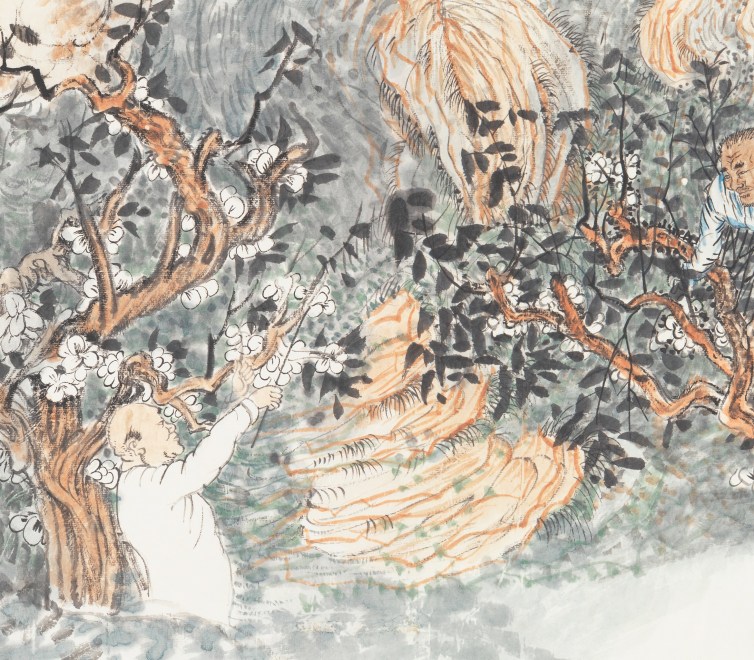
Online Viewing Room
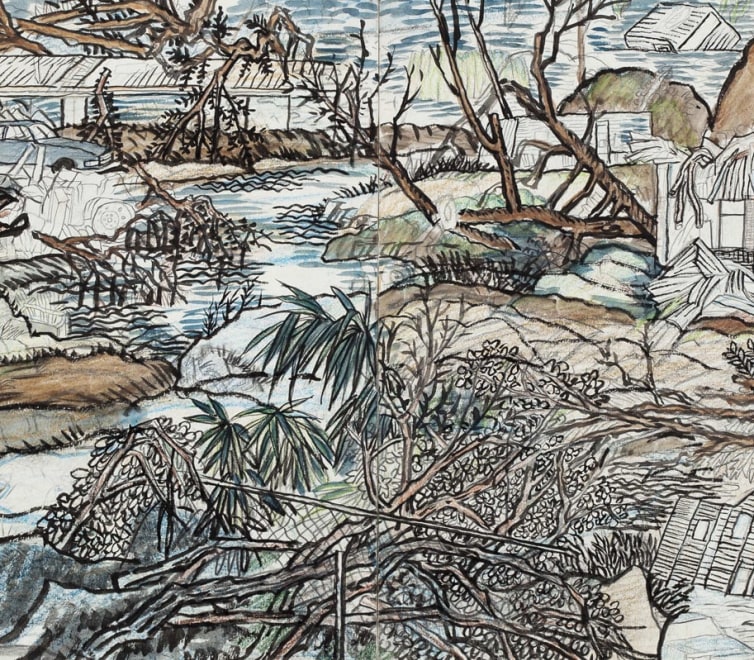
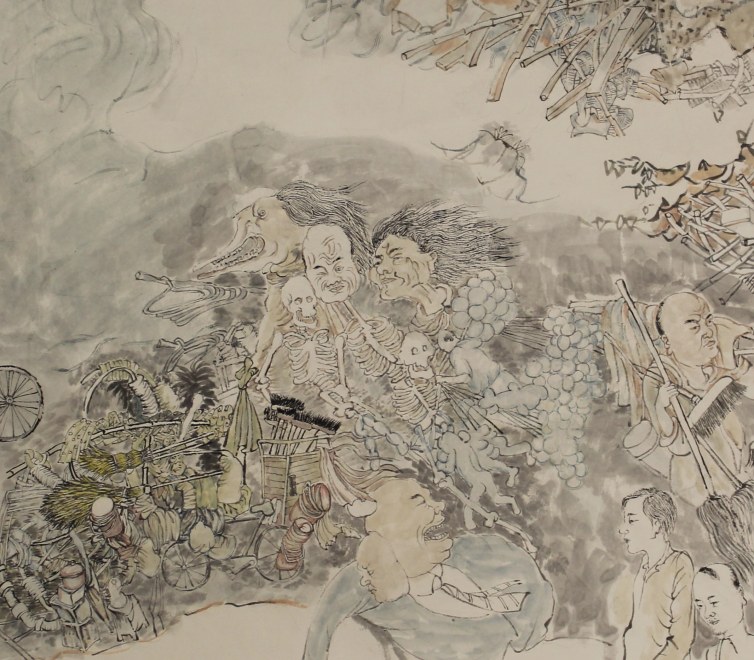
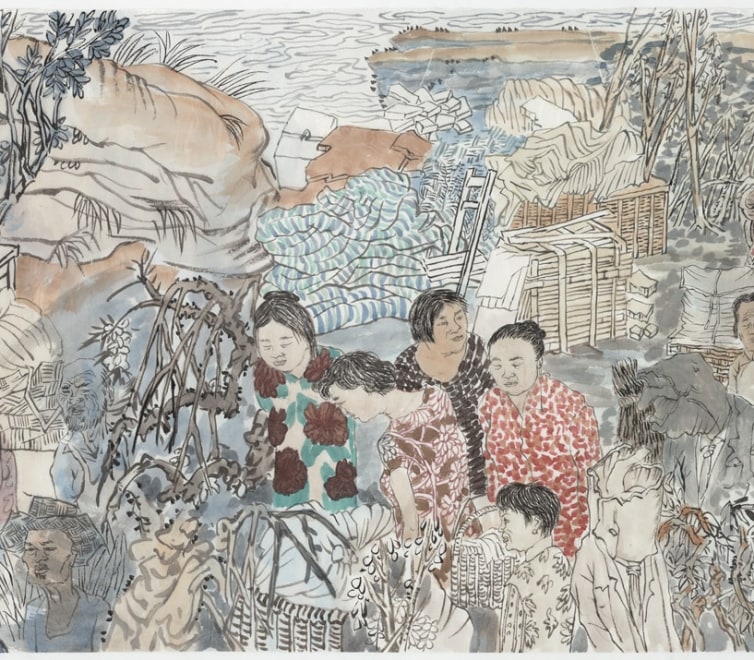

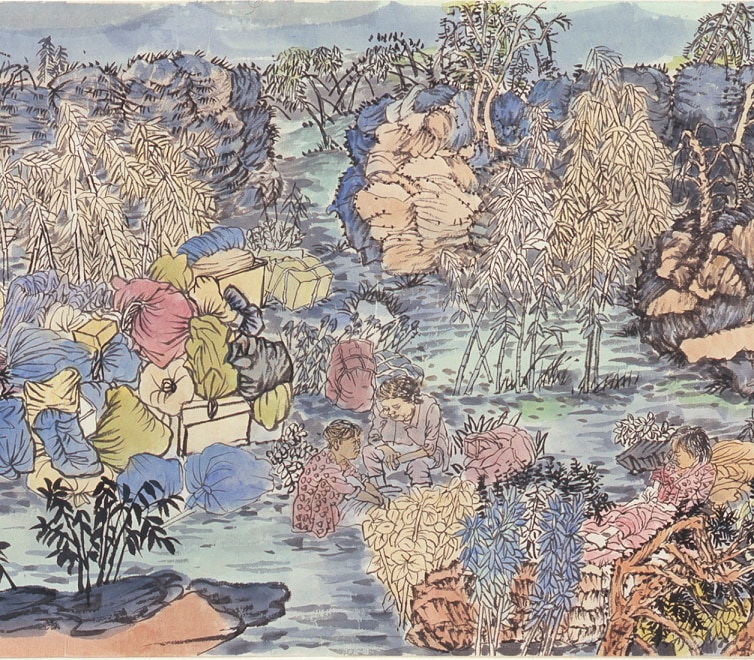
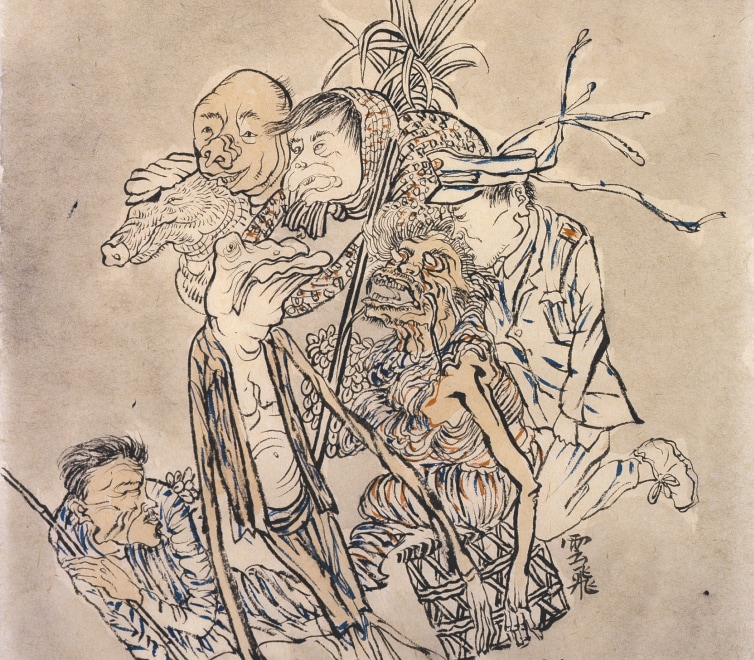
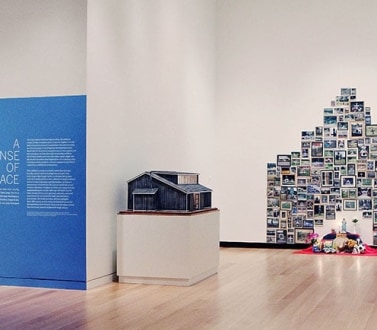
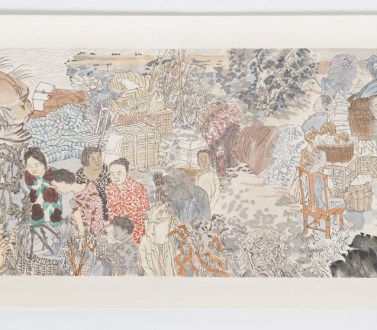
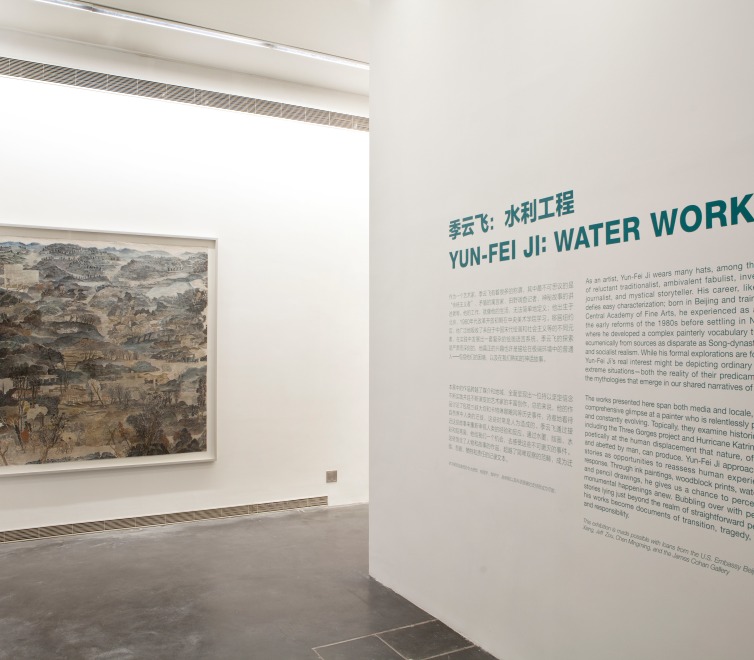
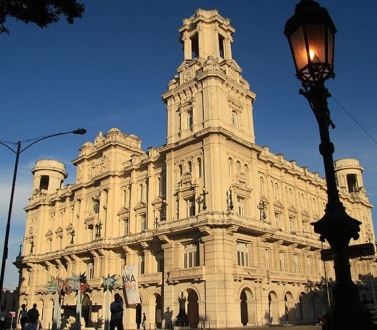
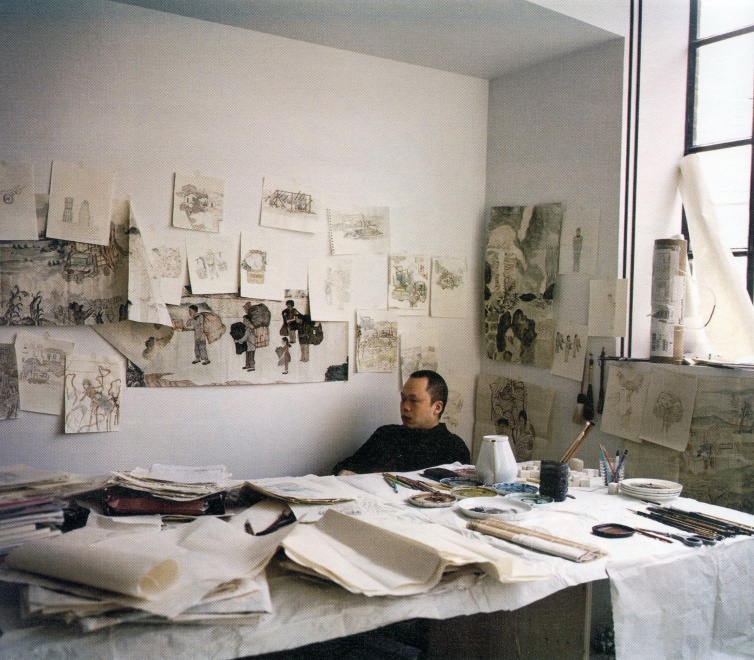
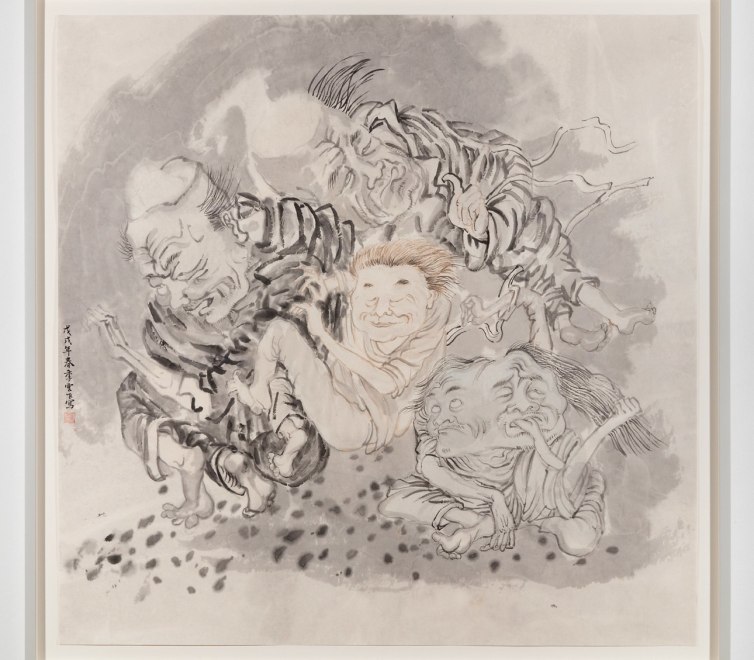
Amherst, Massachusetts
Beijing, China
